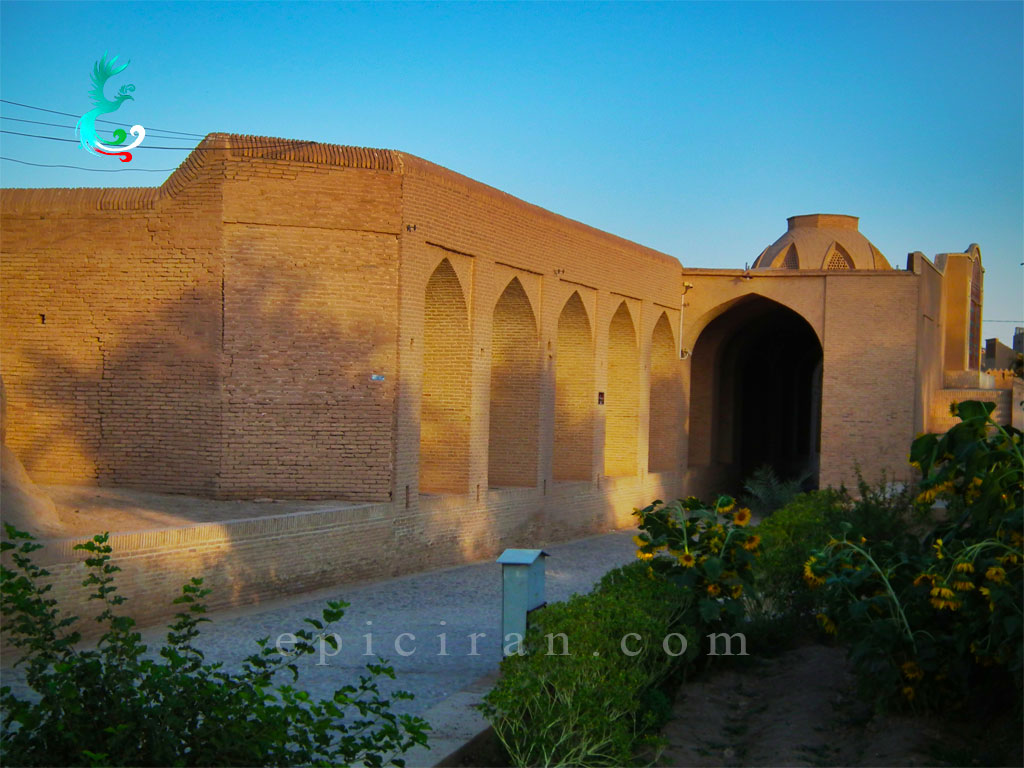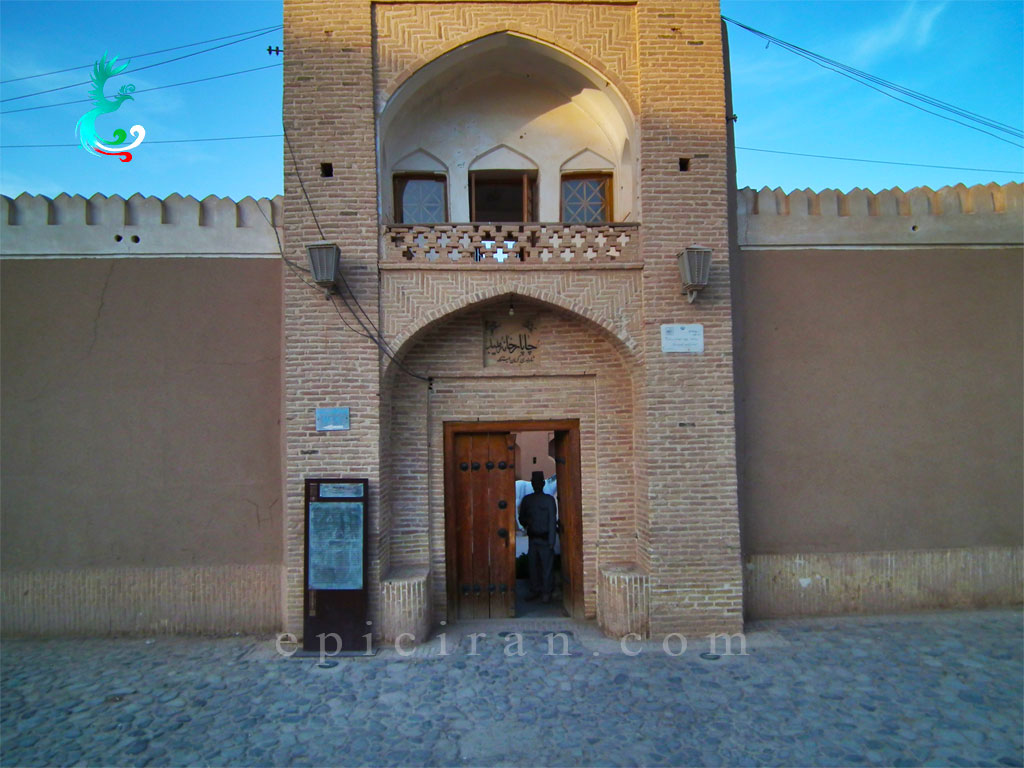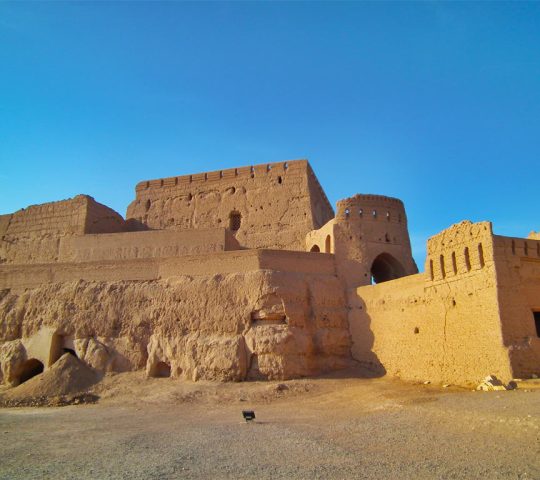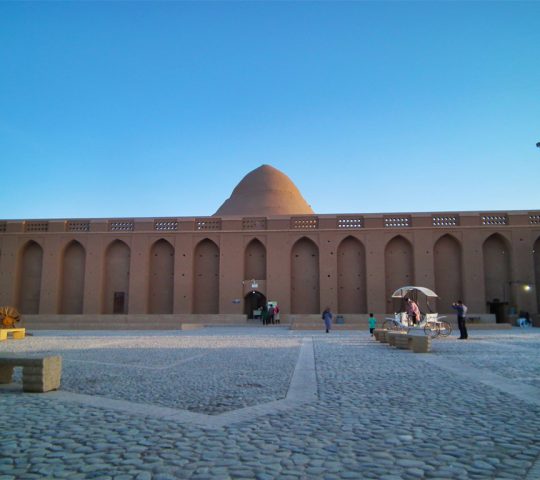Due to the location of Yazd province in the center of Iran and the strategic position of this region in different periods, various caravanserais have been built in this province, and Meybod caravanserai is one of them. Archaeologists and historians consider Meybod Caravanserai to be among the caravanserais of the Safavid period, which was rebuilt in the Qajar period and new parts were added to it. Architecturally, the main feature of almost all caravanserais built in the Safavid period is their rectangular plan. Considering the dimensions of Meybod Caravanserai and the fact that it has more than 100 rooms, it can be said that this caravanserai was the most prosperous caravanserai in this region. Caravanserai, water storage, central pool, and Zillo Museum are other parts of Meybod Caravanserai.

Chapar Khaneh monument in Meybod Caravanserai
From the Achaemenid period, when the first Chapar Khaneh was built in Iran to the early Pahlavi period, the construction of printing houses on the main roads of Iran has continued. Meybod Chapar Khaneh is also one of the printing houses whose history dates back to the Qajar period and is one of the parts of Meybod caravanserai. The building of this Chapar Khaneh after restoration is now known as the Museum of Post Industry. The Chapar Khaneh had a central courtyard with stables around it, and on three sides behind the stables, there were stables where cattle were kept at night and in winter, and between the entrance and country yard, there were rooms for travelers and postmen. The main materials used in this building are clay and mud, but bricks have been used in the entrance and roof parts.




